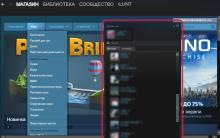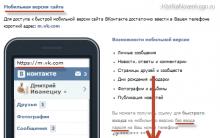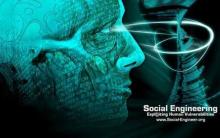Sometimes it becomes necessary to disable USB ports on a computer or laptop in order to restrict access to connect flash drives, hard drives and other USB devices. Disabling USB ports will help prevent any storage devices from being connected that could be used to steal important information or cause a virus to infect your computer and spread malicious software over your local network.
Restricting access to USB ports
Consider 7 ways with which you can block USB ports:
- Disable USB through BIOS settings
- Change registry settings for USB devices
- Disable USB ports in device manager
- Uninstalling USB Controller Drivers
- Using Microsoft Fix It 50061
- Using additional programs
- Disabling USB ports physically
1. Disable USB ports through BIOS settings
- Enter BIOS settings.
- Disable all USB controller related items (e.g. USB Controller or Legacy USB Support).
- After you have made these changes, you need to save the settings and exit the BIOS. This is usually done using the key F10.
- Restart your computer and make sure the USB ports are disabled.
2. Enabling and Disabling USB Drives Using Registry Editor
If disabling via BIOS does not suit you, you can close access directly in the Windows OS itself using the registry.
The instructions below allow you to close access for various USB drives (for example, flash drives), but other devices such as keyboards, mice, printers, scanners will still work.
- Open the Start menu -> Run, enter the command " regedit"And click OK to open the Registry Editor.
- Continue to the next section
HKEY_LOCAL_MACHINE \ SYSTEM \ CurrentControlSet \ Services \ USBSTOR
- In the right part of the window, find the item " Start”And double click on it to edit. Enter value " 4 »To block access to USB drives. Accordingly, if you enter again the value " 3 ”, Access will be re-opened.

Click OK, close Registry Editor and restart your computer.
The above method works only when the USB controller driver is installed. If for security reasons the driver has not been installed, the Start option may be automatically reset to 3 when the user plugs in the USB storage device and Windows installs the driver.
3. Disable USB ports in device manager
- Right-click on the " A computer"And select the" Properties "item in the context menu. A window will open on the left side of which you need to click on the link " Device Manager».
- In the device manager tree, find the item " USB controllers”And open it.
- Disable the controllers by right-clicking and selecting the Disable menu item.

This method does not always work. In the example shown in the figure above, disabling the controllers (the first 2 points) did not lead to the desired result. Disabling item 3 (USB Mass Storage) worked, but it only gives you the option to disconnect a single instance of the USB stick.
4. Removing USB controller drivers
Alternatively, to disable the ports, you can simply uninstall the USB controller driver. But the disadvantage of this method is that when the user connects a USB drive, Windows will check for the presence of drivers and, if they are absent, will offer to install the driver. This in turn will open up access to the USB device.
5. Prevent users from connecting USB storage devices using an application from Microsoft
Another way to deny access to USB drives is to use Microsoft Fix It 50061(http://support.microsoft.com/kb/823732/ru - the link may open near the mituta). The essence of this method lies in the fact that 2 conditions for solving the problem are considered:
- The USB drive has not yet been installed on the computer
- The USB device is already connected to the computer
Within the framework of this article, we will not consider this method in detail, especially since you can study it in detail on the Microsoft website using the link given above.
It should also be noted that this method is not suitable for all versions of Windows.
6. Using programs to disable / enable access to USB storage devices
There are many programs for setting the denial of access to USB ports. Let's consider one of them - the program USB Drive Disabler.

The program has a simple set of settings that allow you to deny / allow access to certain drives. Also, USB Drive Disabler allows you to configure alerts and access levels.
7. Disconnecting USB from the motherboard
While physically disconnecting the USB ports on your motherboard is nearly impossible, you can disable the ports on the front or top of your computer case by unplugging the cable that goes to the motherboard. This method will not completely close access to USB ports, but will reduce the likelihood of using drives by inexperienced users and those who are simply too lazy to connect devices to the back of the system unit.
! Addition
Deny access to removable media through the Group Policy Editor
In modern versions of Windows, it is possible to restrict access to removable storage devices (including USB drives) using the Local Group Policy Editor.
- Run gpedit.msc through the Run window (Win + R).
- Continue to the next branch " Computer Configuration -> Administrative Templates -> System -> Access to Removable Storage Devices»
- On the right side of the screen, find the item "Removable drives: Deny reading".
- Activate this option (position "Enable").

This section of local group policy allows you to configure read, write and execute access for different classes of removable media.
You can enable USB ports on your laptop through BIOS, Device Manager, Registry Editor, or Group Policy Editor. If access to the YUSB connectors was deliberately prohibited with the help of special software, then you can unblock it in the program where the interface is locked. All methods are available to ordinary users and do not require special training.
Disconnecting unnecessary devices
If the USB ports suddenly stopped working, and you are now looking for how to turn them on, then the first thing to do is to see if there is a lot of the device connected to the laptop. When using a USB hub, the laptop may not be able to provide power to all devices, causing the USB connectors to stop responding. Disconnect any unnecessary hardware from the laptop and check to see if the ports work before performing the USB BIOS setup. If nothing has changed, then restart the laptop and enter the BIOS.
Enabling ports in BIOS
To enter BIOS at boot, press Delete, F2, or another key depending on your motherboard model. You can see it on the start screen. 
In the case of a laptop, this screen does not appear because Fastboot is enabled. You can temporarily disable this technology in the power supply parameters:

Reboot your computer. Without quick start, you will see all the stages of Windows boot and will be able to get into the BIOS. If this does not work on Windows 8 or 10 with UEFI BIOS, try the following method:

After rebooting, select Diagnostics, then go to Advanced Options and open the UEFI Firmware Options. Click "Restart", the next start will bring up the BIOS UEFI interface.
To configure USB ports in UEFI, go to the "Peripherals" tab and set the "Legacy USB Support" parameter to "Enabled". If you need support for USB 3.0 ports, please activate the corresponding item (USB 3.0 Support). 
In the AMI BIOS, go to the "Integrated Peripherals" section and set the "Enabled" value for the four options:
- USB EHCI Controller.
- USB Mouse Support.
- USB Keyboard Support.
- Legacy USB Storage Detect.
In Phoenix AwardBIOS, go to the “Advanced” tab and go to the “USB configuration” section. All parameters inside must be set to "Enabled" for the YUSB ports to work. 
In all BIOS versions, to save the configuration, press the F10 key and confirm the selection by writing "Y".
Windows setup
If the BIOS has ports enabled, but USB devices are not detected by the system, then check the Registry Editor, Device Manager, and Group Policy Editor. Perhaps, through them, changes were made to the system, due to which the ports are now not working. You should start with the Registry Editor.

If USB is enabled in Registry Editor, check the controller drivers in Device Manager.

If you see an exclamation mark icon next to the controller, and you are sure that the interface is supported in the registry editor, then this means that there are problems with the drivers. Try updating your software first:

If updating the controller software doesn't help, update your motherboard driver. Download it from the manufacturer's website and install it manually. Another way to update the drivers for all controllers at once is to remove them from the system. Right click on the controllers and choose Delete. After rebooting, the system will automatically install the controller drivers, so you no longer have to think about how to enable USB ports - they will work anyway. 
If only removable devices connected via USB do not work, then check in the Group Policy Editor if the read block is set.

Find the Removable Devices: Deny Read option and set it to Disable. The problem with identifying flash drives and external drives should disappear.
Hardware damage to ports
If the laptop has damaged USB ports or the south bridge on the motherboard, then no method will help to enable the interface. Therefore, if the connectors stopped working after mechanical stress, liquid entering the case, short circuit or other negative factors, then you should take the laptop to the service for diagnostics. 
In the case of the system unit, some USB ports can be replaced independently, but in a laptop this is not possible, because all the connectors are soldered to the motherboard.
On some computers, when you connect a hard drive or USB 3.0 flash drive, the error “Device not recognized " (USB Device Not Recognized) or " Windows has stopped this device because it reported a problem.(Code 43)"in device manager.
In this article, you will find instructions on how to fix the following problems:
- USB device not recognized / not detected
- USB 3.0 flash drive not recognized / not detected
- USB 3.0 does not work on Windows 7/10
How to Fix: USB 3.0 Port Not Working on Computer
Before we move on to troubleshoot this issue, you should try the following:
- Use a different USB cable if you are connecting the hard drive to a USB 3.0 port on your computer.
- Connect USB 3.0 to USB 2.0 port.
- Remove the USB device, shut down the computer, and unplug the power cord (or battery if using a laptop). Wait at least 2 minutes and then plug the power cord back in. Turn on your computer and reconnect your USB device.
- If you are using Windows 7, Vista, or XP, download and run the Microsoft Troubleshooter utility.
- Reset BIOS to factory settings.
Solution 1: Disable Fast Startup feature in Windows 8 and 10

Note: If the Fast Startup option was already unchecked, check it and restart your computer. After restarting, uncheck the box and restart your computer again.
- Reboot a computer.
Solution 2: Disable USB suspend settings.

Solution 3. Restart your USB 3.0 device.
- Open up device Manager... For this:
- Press the keys " Windows» + « R"To open the" Run ".
- In the window " Execute»Enter: devmgmt.msc.
- Click on Enter.
2. In Device Manager, expand "ControllersUSB» .

3. Right-click on " RootUSB-concentrator (USB 3.0 ) "And select" Delete".
4. Windows will automatically find and install the latest drivers for your USB 3.0 port. 
Solution 4. Install the latest USB 3.0 drivers.
- Download Intel Driver Update Utility or AMD drivers.
- Run driver update utility and press " Further" on the first screen.

- Accept the license terms and click “ Install".

- Wait while the driver update utility is installed.
- After the installation is complete, click " Run».

- Click " Start Scan ".

- When the driver scan is complete, click " Download", to download the latest drivers for your computer.

- Finally, click on " Install".

- After the installation is complete reboot a computer.
Solution 5. Restore Windows to a previous working state
If the solutions above did not help with the problem when USB 3.0 does not work on the computer, you should try to restore the computer to a previous working state. This can be done if you previously activated the Windows restore point.
Please write in the comments below if you managed to solve the problem with the faulty USB 3.0 port, and what solution helped in your situation.
If the USB ports do not work on your PC, and Windows settings and driver updates do not help, the controller may have been disabled in the BIOS. In this case, you need to go to the configuration menu and turn everything back on.
There are many different versions BIOS with their interfaces and subtleties of work. Also, a more modern complex can run on your computer - UEFI which supports a full-fledged graphical interface. This article discusses the distributions that are most often installed on motherboards.
Entering BIOS settings
To start changing the configuration, you need to go to the corresponding menu. It can be opened when the personal computer is turned on - before Windows starts booting from the hard disk.
Turn on your PC. In case it already works: reboot. Wait for the speaker beep: a short single beep indicates that all internal components necessary for the computer to operate have been detected.
Now you need to click hotkey to call the configuration. This must be done before changing the screen. If you do not have time, and Windows starts loading, reboot. Keys vary depending on motherboard model installed and BIOS firmware version. You can find it out in the user manual that comes with the motherboard, on the manufacturer's official website, or look at your PC screen when loading it:
If you don't know the board model, that's okay. Just try pressing the following keys: Tab, Delete, Esc, F1, F2, F8, F10, F11, F12. One of them will probably do..
You don't have to try only 1 option at a time. You can quickly press all the buttons from the list without any problems. One of them will come up and launch the BIOS settings, and the rest will be ignored.
Entering BIOS / UEFI Settings on Latest PCs
Many modern computers boot up so quickly that you won't be able to hit by pressing the keys when turning on. This is also true for laptops. Therefore, the latest versions of Windows have a new startup feature. Let's show it using the example of Windows 8.1.
Your computer or laptop will reboot into setup mode. After restarting your PC, you will also be able to select option to start from a USB stick or DVD.
Menu navigation
Almost all BIOS versions lack a graphical interface. This means that you only have to work with the keyboard, as, for example, in the Windows console. Navigation is carried out using the arrows "up-down" and "right" - "left". To open any section, use the Enter key to go back - "Escape". A small reminder of the keys used is always shown on the screen.
Complex of microprograms UEFI installed on the most expensive and powerful motherboards. It supports more drivers and knows how to work with a mouse... Its interface will be familiar to users of Windows and other modern operating systems.
Each version has its own interface and sets of options. Even the names of the same parameters may differ. The article further describes several popular BIOS releases.
AMI BIOS
A very common variant that can be found on many modern computers. The main menu is divided into 2 parts: a list of categories and various actions like exiting or saving. You will be working on the left side.
You need to go to the section called " Integrated peripherals". There is no Russian-language version of the interface, so all commands are in English only. Use the Down Arrow to highlight the item and press Enter.
Here you need to include ( Enabled) 4 options:
- USB EHCI controller- the main controller. If the motherboard has ports of version 3.0, this item will be divided into 2 parts: "Controller" and "Controller 2.0";
- USB Keyboard Support- keyboard support;
- USB Mouse Support- mouse support;
- - work with external data storage: flash drives, disk drives, disks of smartphones and digital cameras.
In some older versions, there are only 2 items " USB controller" and " Legacy USB storage support».
When you're done with the settings, press the F10 key to save your changes and restart your computer.
Phoenix AwardBIOS
Another popular version often found on modern laptops. It does not have a main page like AMI, but it is provided with convenient thematic tabs at the top. You can navigate between sections using the "left" - "right" arrows, and between items - using the "up" and "down".
Go to the section " Advanced"With the" Right "arrow. Find the category " USB configuration". All items in this section must be translated into the position " Enabled". In some versions, the category " USB configuration"Can be in the" Peripherals"And not in" Advanced ".
To exit the menu, press F10 and confirm the exit.
AMI BIOS for Asus
The AMI version used on Asus laptops. Externally very similar to Phoenix - a similar bookmarks bar. Settings USB are in the section " Advanced". Go there, enable all options and exit with the F10 button.
UEFI
Contrary to popular belief, UEFI is not part of the BIOS. Rather, it can be called a more advanced, but less popular competitor. There are many different versions, each with their own interfaces. However, the control here is similar to the familiar Windows, so you can easily find the options you need.
Windows settings
If at the BIOS level all ports and controllers are enabled, but the USB ports still do not work, the problem may be in the settings of your Windows system.
First, try just disconnect and reconnect the device... This will cause the drivers to be checked for correctness. If something is wrong with them, Windows will try to reinstall them.
If nothing happens when reconnecting, try turn on the controller in the Windows registry. To do this, you need to do the following:

Video: how to configure any BIOS to boot from a USB flash drive











Prolongation of registration of participants in the "Living Classics" competition!
Who deleted me from friends on VKontakte All friends disappeared from the contact
Which operator was the best in Russia
Double cassette tape recorder
"VK" can be closed for a long time